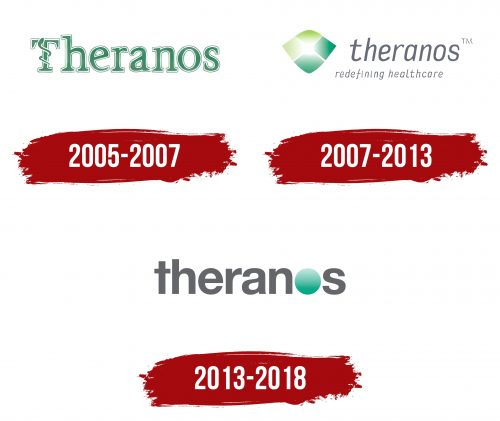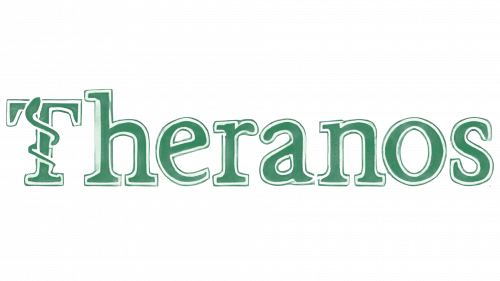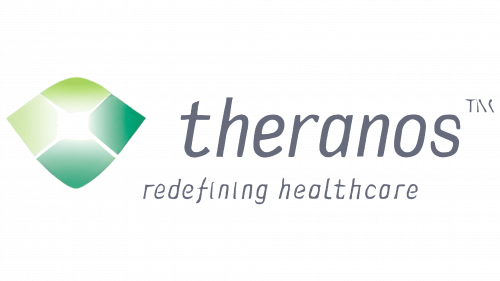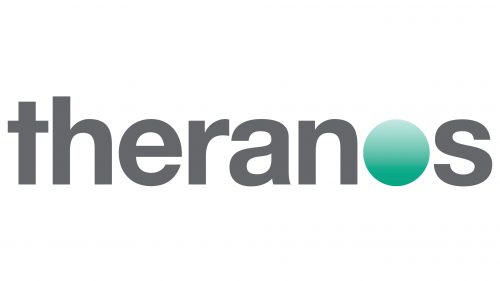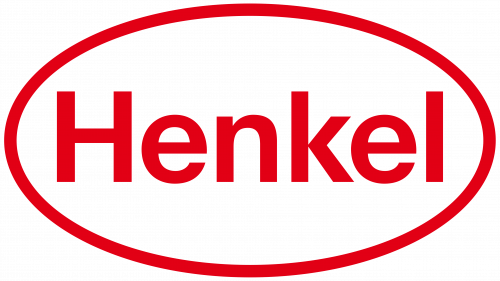The Theranos logo emphasized the naturalness of the company’s medical processes before its exposure and dissolution. The emblem conveyed the safety of its research, its connection to healthcare, and its commitment to active development.
Theranos: Brand overview
Theranos’ history started in 2003 when Elizabeth Holmes, then 19 years old, established the business in Palo Alto, California. After a short while, the business changed its name from Real-Time Cures to Theranos, a play on the phrases “therapy” and “diagnosis.”
After leaving Stanford University, Holmes started the company with an audacious plan to completely transform the blood testing market. She aimed to develop a device that could run hundreds of tests with just a few finger-prick blood droplets.
Unusually for Silicon Valley, the corporation operated in absolute secrecy during its early years. Major investments were made in Holmes, including those from renowned venture capitalists and individual investors.
In 2010, the enterprise asserted that it had created a breakthrough technique that allowed the execution of more than 200 distinct blood tests with just a few drops. The business claimed that “Edison,” its gadget, could do tests fast and precisely, possibly revolutionizing the laboratory diagnostics sector.
A big turning point for the firm came when the business announced a collaboration with Walgreens, a pharmaceutical giant. The idea was to provide public access to blood testing by opening testing centers at thousands of Walgreens nationwide locations.
The organization saw tremendous expansion and notoriety in 2014. With the company bringing in large sums of money, the enterprise was valued at $9 billion, and Elizabeth Holmes became the youngest female self-made billionaire. Prizing the firm’s ground-breaking technology, Holmes gave interviews, spoke at conferences, and appeared on magazine covers.
But everything started to change in October 2015. Journalist John Carreyrou of the Wall Street Journal questioned the enterprise’s technology in several pieces. According to the stories, the company wasn’t employing the supposedly innovative technology for most of its tests; instead, it used conventional blood testing procedures.
In response to these stories, the Food and Drug Administration (FDA) and the Centers for Disease Control and Prevention (CDC), among other regulatory agencies, launched investigations.
The problem continued throughout 2016. Walgreens closed all its in-store testing facilities and ended its collaboration with the firm. The Centers for Medicare and Medicaid Services (CMS) withdrew the company’s California lab license for standard-breaking behavior.
In June 2018, a federal grand jury charged former president Ramesh “Sunny” Balwani and founder Elizabeth Holmes with fraud. Eleven counts were brought against them, including wire fraud and conspiracy. This was the last step in a protracted probe into the company’s operations.
The business officially announced its closure on September 14, 2018. The firm said it would provide investment firm Credit Suisse with its remaining assets so the remaining creditors might receive them. With this action, the once-promising medical technology startup finally folded.
2019 saw the continuation of preparations for the Holmes and Balwani trials. The court rejected each of the motions for the case to be dismissed that the defendants’ attorneys filed. Because of the impending trial, there was a lot of legal action during this time.
2020 and 2021 were set aside for Elizabeth Holmes’s trial. The trial’s commencement was postponed multiple times due to various circumstances, including Holmes’s pregnancy. When it finally started in August 2021, it garnered a lot of media and public attention.
Elizabeth Holmes was found guilty on four counts of investor fraud by a jury on January 3, 2022. This decision ended one of the most well-known trials in Silicon Valley history.
Elizabeth Holmes was found guilty of investment fraud on November 18, 2022, and given an 11-year and 3-month prison sentence. With this statement, the tale of Theranos, which started as a promising business and became one of the worst scandals in the biotechnology industry’s history, ended.
Meaning and History
What is Theranos?
The American medical technology company claimed to have developed a revolutionary blood testing technology that could quickly and accurately perform a wide range of tests with just a few drops of blood. The company was founded by Elizabeth Holmes and promised to revolutionize medical tests by making them faster, cheaper, and more accessible. However, an investigation revealed that the technology did not work as claimed, and the company was involved in widespread deception about its capabilities. This led to regulatory scrutiny, litigation, and, ultimately, the company’s collapse. Elizabeth Holmes and other executives were criminally charged with fraud and conspiracy.
2005 – 2007
The Theranos emblem from that period bore a striking resemblance to the classic medical symbol. This was done intentionally to emphasize the company’s connection to healthcare. The logo featured the image of a caduceus, a symbol of medicine, specifically the staff of Asclepius, encircled by a single snake. In this case, however, the staff was replaced by the stem of the capital letter “T,” the first glyph in the brand name, which is derived from two words:
- therapy;
- diagnosis.
Notably, the snake in the logo is shown climbing upward, making the emblem resemble the traditional symbolism of the World Health Organization (WHO). The snake has long symbolized the medical profession, with four key reasons for its use. The first is associated with Asclepius, who, according to ancient legend, went to heal the emperor’s sick son. The second is linked to Moses, who healed people using a bronze serpent on a pole.
The third and fourth reasons for using the snake in medicine are more utilitarian. The snake is considered a symbol of longevity and regeneration, as it periodically sheds its skin. Snakes quickly transition from a lethargic state to an active phase, associated with rapid recovery and restoring strength.
The Theranos logo features a single snake, much like the WHO emblem. The snake is directed upward toward the horizontal bar of the “T.” The font was carefully selected to convey the narrow curves of the reptile. To achieve this, the letters have an additional outline around their perimeter: the thin line surrounding them resembles the elongated body of a snake.
Almost all the glyphs (except the first) are in lowercase. They have smooth contours, soft curves, and gentle bends, which directly evoke the image of a slithering snake or its tracks on the ground. Two letters particularly resemble this creature:
- The “h” is shaped like a snake in a warning or striking pose, with its body extended upward;
- The “e” looks like the head of a reptile with an attentive eye and an open mouth, as if watching or ready to strike.
The logo’s color also reflects the snake imagery, as various shades of green are the natural hues of many snakes. Moreover, green symbolizes growth, nature, natural processes, and the transition to the next stage of development. The pastel palette indicates the non-aggressive nature of the methods used. It calms the nervous system, reduces anxiety, and instills a sense of tranquility.
2007 – 2013
In its new identity, the brand moved away from medical allusions to focus on a technological theme. The reason was that the company’s leadership claimed it was using innovative technologies with no global analogs, which later turned out to be a deception. However, this left a significant mark on the visual identity, as the Theranos logo remains forever. It now shows how a logo can attract clients, earn their trust, and project exclusivity.
Gone are the elegant serifs, soft curves, and wavy lines reminiscent of snake tracks in the sand. They have been replaced by geometric precision with smooth strokes, thin lines, and neat glyphs. The name is written in lowercase letters and accompanied by the motto “redefining healthcare.”
- The first line is rendered in a lowercase, italic, calligraphic font resembling handwritten text. This was done to inspire client trust, as logos with a personal touch are valued more than those with standard, impersonal elements. The vertically elongated letters appear very refined.
- The second line uses a similar font: slanted, neat, and thin, which conveys trust and looks very friendly. This line features the company slogan, which conveys a positive outlook on the future, encourages patients, reflects dynamism, and focuses on innovation.
The technological graphics are skillfully combined with the snake theme, as upon closer inspection, one can notice snake scales in the logo. This maintains the connection to medicine. There is also an allegorical nod to protection, as four diamonds are arranged in the shape of a shield with curved ends (top and bottom). The shield has long been used in heraldry as a symbol of power.
When combined, the geometric figures form a fifth diamond—the largest. Two segments are colored dark green, and two are light olive. They harmoniously complement each other, being sides of a unified whole. The green shades also indicate the processes’ naturalness, the research’s safety, and the organic nature of the methods used.
With this color, the medical company conveys a message of the naturalness of its innovations, which, as later revealed, were fake. However, the logo effectively fulfilled its purpose: it attracted clients’ attention and represented the services of the medical service center. At the shield’s center is a bright radiance, as if the sun is rising there, shining brightly. The white color also symbolizes purity, hygiene, trust, and openness.
2013 – 2018
The new design introduced simplicity and minimalism into the Theranos logo but took away part of the concept—the essence of the company’s existence and what it does. It is just a plain gray text symbol with a simple sans-serif font. However, the lettering has become much clearer because the letters are:
- Bold;
- Wide;
- Сhopped;
- Lowercase.
Their expressiveness is enhanced by rectangular ends and very high curves (meaning the turns are smooth but with sharp contrasts). Due to this feature, the “s” resembles a long, winding worm. The typographic interest is in the lowercase “t,” which resembles a telephone pole with a single crossbar. From a design perspective, the unusual “o” catches the eye. This letter is absent; a green circle is used instead—what remains from the previous Theranos emblem.
The gradient sphere (or a large dot) fits perfectly into the brand name, reminding us of its connection to naturalness and organic qualities. It symbolizes a planet, although this doesn’t directly relate to the company’s field of activity. The circle features an interesting color transition from dark turquoise to a soft Tiffany shade. This is undoubtedly a plus, as such a palette is pleasing to the eye and evokes a sense of warmth.

